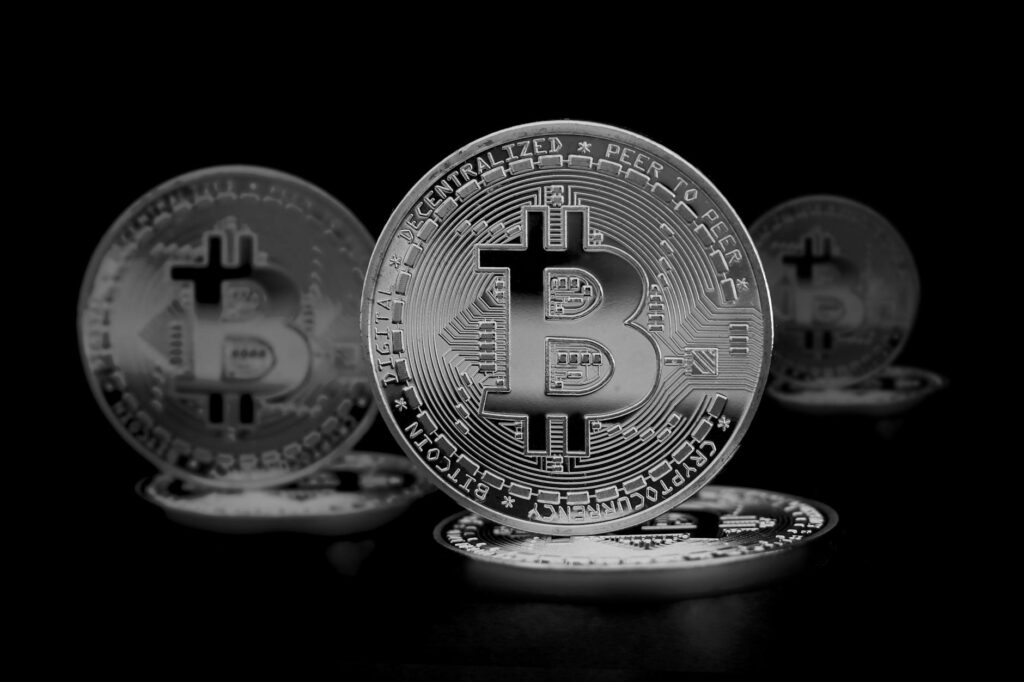The Invisible Threat in Your Crypto Wallet
Let’s set a scene. You’ve been navigating the crypto world for a while. You regularly send ETH to a friend, or maybe move funds to your favorite DeFi protocol. You’re careful. You use a strong password and a hardware wallet. You feel pretty secure. One day, you need to send another transaction to that same, familiar address. You open your wallet, go to your transaction history, and copy the address from your last successful transfer. You paste it, enter the amount, sign the transaction, and hit send. A few minutes later, your friend messages you: “Hey, where’s that ETH?” Your stomach drops. You check the block explorer. The transaction is confirmed, but the funds are sitting in a stranger’s wallet. What just happened? You’ve likely just become a victim of Address Poisoning, a deviously simple scam that preys on habit and inattention.
This isn’t a high-tech hack that breaks your wallet’s encryption. It’s a social engineering trick, a digital sleight-of-hand that manipulates your own transaction history to deceive you. It’s one of the fastest-growing threats in the space because it bypasses many of the security measures we’ve been taught to rely on. It targets the one vulnerability no software can patch: human psychology.
Key Takeaways
- Address Poisoning is a Scam, Not a Hack: It tricks you into sending crypto to a scammer’s address that looks identical to one you trust.
- How it Works: Scammers send you a tiny (or zero-value) transaction from a custom-generated “vanity” address that matches the first and last few characters of a real address in your history.
- The Danger is Habit: The scam relies on users copying addresses from their transaction history out of convenience, assuming it’s safe.
- Prevention is Key: The best defenses are procedural: always use an address book or whitelist, triple-check the full address, and use small test transactions for large amounts.
- Recovery is Unlikely: Due to the immutable nature of blockchains, retrieving stolen funds is nearly impossible once a transaction is confirmed.
So, What Exactly is Address Poisoning?
At its core, Address Poisoning is a deception. Imagine a con artist who learns your friend’s home address. They can’t break into your friend’s house, so they do something cleverer. They buy the empty lot next door and build a house that looks *exactly* the same from the front. Then, they subtly switch the address plaque on your friend’s mailbox with their own. The next time you drive over to your friend’s place, you pull into the wrong driveway, walk up to the wrong door, and hand over your package to the con artist. That’s address poisoning in a nutshell.
In the crypto world, the scammer isn’t building a house; they’re generating a custom wallet address. Crypto addresses are long, complex strings of characters, like `0xAb5801a7D398351b8bE11C439e05C5B3259aeC9B`. Because they’re so long and unmemorable, most people only check the first few and last few characters to verify they’re correct. Scammers know this. They use tools to generate a new wallet address (a “vanity address”) that has the same beginning and ending characters as an address you frequently interact with. Then, they “poison” your transaction history by sending you a tiny, often $0.00, transaction from their look-alike address. This malicious transaction now sits in your wallet’s activity log, looking legitimate and waiting for you to make a mistake.

How an Address Poisoning Attack Unfolds, Step-by-Step
Understanding the mechanics of the attack is the first step toward defending against it. It’s a patient, calculated process designed to exploit a single moment of inattention.
- Reconnaissance: The attacker starts by scanning the blockchain. All transactions are public, so they can easily find active wallets. They look for your address and analyze your transaction history to see which addresses you interact with frequently. This could be a centralized exchange, a staking contract, or a friend’s wallet.
- Vanity Address Generation: Let’s say you often send funds to `0xAb58…eC9B`. The attacker uses a special tool to generate thousands of addresses per second until they find one that also starts with `0xAb58` and ends with `eC9B`. The characters in the middle will be completely different, but that’s the part nobody checks. For example, their address might be `0xAb5801a7D398351b8bE11C439e05C5B3259aed7e`.
- The Poisoning: The attacker takes their newly created vanity address and sends a zero-value token transfer or 0.000001 ETH to *your* wallet. This transaction is now permanently recorded on the blockchain and, crucially, appears in your wallet’s transaction history feed (like in MetaMask or Trust Wallet).
- The Bait is Set: Now, they wait. They have laid the trap. Nothing else needs to be done on their end. The success of their scam now depends entirely on you.
- The User’s Mistake: A week later, you need to send more funds to that same trusted address. Instead of getting the address from a secure source, you take a shortcut. You open your wallet, glance at your recent transactions, and see what *looks* like the right address. The first six and last four characters match. Perfect. You copy it.
- The Trap is Sprung: You paste the scammer’s address into the recipient field, confirm the transaction on your hardware wallet (still likely only checking the beginning and end of the address on the tiny screen), and send a significant amount of your crypto. The funds are instantly and irreversibly sent to the attacker.
The Psychology: Why This Simple Trick is So Effective
This scam works because it exploits our brain’s natural tendency to create mental shortcuts. It’s a concept known as heuristics. Faced with a complex task—like verifying a 42-character alphanumeric string—our brain simplifies it. We check the beginning and the end, and our pattern-recognition system fills in the blanks, assuming the middle is correct. It’s a feature of our brain, not a bug. It saves us time and energy in our daily lives.
Scammers weaponize this. They count on your complacency and muscle memory. After you’ve sent 10 transactions to an address successfully, you stop being paranoid about the 11th. You get comfortable. That comfort is the vulnerability. The zero-value transaction is designed to blend in, to look like a normal, albeit small, piece of activity in your wallet. It’s digital camouflage for a malicious payload.
How to Spot an Address Poisoning Attempt
The good news is that once you know what to look for, these attempts are fairly easy to spot. The key is to shift from a reactive mindset to a proactive one. Be the detective of your own transaction history.
- Scrutinize Unsolicited Transactions: The most obvious red flag is a transaction in your history that you don’t recognize. If you see a 0 ETH transfer or an airdrop of a worthless token from an unknown address, be immediately suspicious. This is the calling card of an address poisoner.
- Check the Transaction Value: Poisoning transactions are almost always for a zero or near-zero amount. Scammers aren’t going to send you real money. They are spending a tiny amount on gas fees to potentially steal a much larger amount from you later.
- Look for Suspicious Tokens: Sometimes, instead of a zero-value ETH transaction, the scammer will send you a worthless NFT or a scam token. These often have names designed to lure you to a malicious website. Ignore them completely. Don’t interact with them, don’t try to sell them. Just pretend they don’t exist.

Crucial Steps to Protect Yourself from Address Poisoning
Protection isn’t about buying a new piece of software. It’s about building iron-clad habits. It’s about instilling a healthy dose of paranoia into your transaction routine. Here are the most critical steps you must take to make yourself immune to this scam.
1. Stop Copying from Your Transaction History. Period.
This is the single most important rule. Treat your transaction history as a read-only log for auditing, not a trusted source for addresses. It’s like reading an old diary; it tells you what happened in the past, but you shouldn’t use it to make decisions about the future. The convenience isn’t worth the risk. Make a commitment, right now, to never copy a recipient address from your wallet’s activity feed again. This one change in behavior will eliminate 99% of your risk from this specific attack.
2. Use an Address Book or Whitelist
So if you can’t copy from your history, where do you get the address? The answer is an address book. Every major wallet, whether it’s MetaMask, Phantom, or a hardware wallet’s native app like Ledger Live, has a built-in address book feature.
When you need to send funds to a new, trusted address for the first time, verify it meticulously. Get it from the source, check it character by character, and then save it to your address book with a clear, unambiguous label (e.g., “My Coinbase Deposit ETH” or “Sarah’s BTC Wallet”). From that moment on, you will *only* ever use the saved entry from your address book to initiate a transaction. This is the gold standard of wallet hygiene. You are creating your own trusted, verified list and ignoring all the noise.
3. Triple-Check the FULL Address
For those times when you absolutely must use a new address that isn’t in your address book, you need to be methodical. Don’t just check the first four and last four characters. This is the habit scammers rely on. Instead, force yourself to check a few characters from the middle as well. A good technique is the “chunking” method: read the first six, a random four from the middle, and the last six out loud. Compare them to the source address. If you’re confirming on a hardware wallet, do the same thing on the device’s small screen. Yes, it’s tedious. But it’s infinitely less tedious than trying to recover from a total loss of funds.
Pro Tip: When verifying an address with someone, don’t just rely on a single channel like a text message, which could be compromised. Verify the address over a second channel if possible, like a voice call or a different secure messaging app.
4. Small Test Transactions Are Your Best Friend
Are you about to move a significant amount of money? Something that would hurt if it vanished? Always send a small test transaction first. Send $1 or $5 worth of crypto to the address. Wait for it to be confirmed. Check with the recipient that they have received it in the correct wallet. Only after you have 100% confirmation that the small test transaction was successful should you send the main amount. The gas fee you pay for that extra transaction is the cheapest insurance policy you will ever buy in the world of crypto. Don’t be cheap when your security is on the line.
5. Use a Hardware Wallet
A hardware wallet won’t automatically stop you from falling for an address poisoning scam. You can still approve a transaction to a malicious address. However, it introduces a critical point of friction into the process. It forces you to physically connect a device and press buttons to confirm the transaction details on a separate, trusted screen. This simple act breaks your autopilot mode. It makes you slow down and gives you one last, crucial opportunity to spot a discrepancy in the address you are sending funds to. It’s an extra layer of security that complements your own vigilance.
What to Do if You’ve Been a Victim
This is the hardest part of the conversation. Due to the immutable and decentralized nature of blockchains, if you send cryptocurrency to the wrong address, it’s almost certainly gone for good. There is no “undo” button. There is no bank to call to reverse the charge.
However, you can take a couple of small steps. You can go to a block explorer like Etherscan and use their reporting feature to flag the scammer’s address. This can help prevent others from falling for the same trap, as the address may get a public label warning users. You can also report the incident to law enforcement, although the chances of recovery are slim.
Most importantly, be wary of secondary scams. Scammers often target victims of previous scams, promising to recover their funds for a fee. These are *always* scams. Do not send more money to anyone promising to get your stolen crypto back.

Conclusion: Your Security is Your Responsibility
Address poisoning is a stark reminder that in the decentralized world, you are the ultimate guardian of your assets. The security of your crypto doesn’t just depend on complex cryptography; it hinges on your everyday habits and your unwavering attention to detail. The tools and techniques scammers use will constantly evolve, but the principles of protection remain the same: be skeptical, be methodical, and never trade security for convenience.
By abandoning dangerous habits like copying from your transaction history and adopting robust procedures like using an address book and sending test transactions, you can effectively neutralize this threat. Stay vigilant, stay educated, and stay safe.
FAQ
Can address poisoning hack my wallet or steal my private keys?
No, absolutely not. This is a crucial distinction. Address poisoning is a deception technique, a form of social engineering. It tricks *you*, the user, into voluntarily signing and sending a transaction to a malicious address. It does not compromise your wallet, steal your seed phrase, or drain your funds without your approval. Your private keys remain secure.
Does this scam only affect Ethereum?
While it is most commonly associated with Ethereum and other EVM-compatible chains (like Binance Smart Chain, Polygon, Avalanche) due to the structure of their addresses and the popularity of wallet browser extensions like MetaMask, the underlying principle can apply to any blockchain. Any system where transaction histories are public and addresses are long, complex strings of characters is theoretically vulnerable to this kind of psychological trick.
I use a hardware wallet, so am I completely safe from this?
No, a hardware wallet is not a magic bullet, but it is a powerful shield. It protects your private keys from being exposed online, but it cannot prevent you from authorizing a transaction to a scammer’s address. Its main benefit against address poisoning is that it forces a manual verification step on a separate, trusted screen. This slows you down and gives you a critical final chance to carefully inspect the full address before you give your final approval. It helps, but it still relies on you to be vigilant and actually check the address on the device’s screen.


